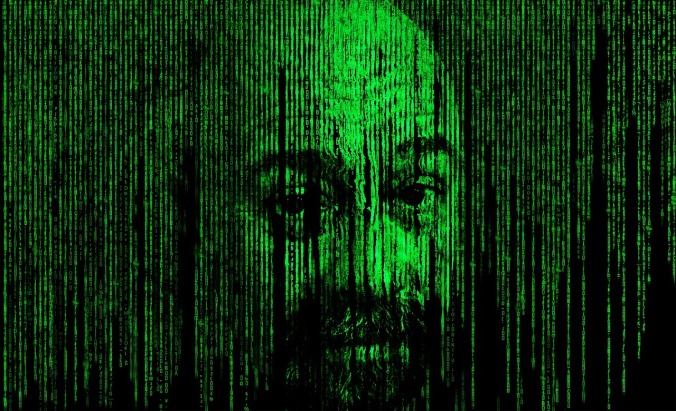If you’ve read my other articles, you’ll know by now that this is not the first time I’ve talked about black holes. Today, I want to talk about a topic that I’ve somewhat brushed past in prior articles when I’ve talked about string theory and quantum mechanics and that is the idea of the black hole information paradox, primarily because this paradox or theory creates or identifies some major conflicts between the theories of quantum mechanics and the theory of general relativity.
Per an article posted by theoretical physicist, Matt Strassler, I was able to find out just what this information paradox is all about. I will be relying on portions of his article for the sake of clarity as this concept is very rife with inconclusive data and confusion at the present time. The first important distinction is that between quantum mechanics, the mathematical theory that underlies the fundamental physical processes that are required to create matter and substance in the natural universe. Quantum theory, in short also dictates that information is never lost, rather that it is either scrambled or rearranged. An example of this is when a sheet of paper is burned to ash, the information that comprised the atomic and particle composition of the paper is not destroyed or lost, rather it is just scrambled nearly beyond the point of repair. In theory, all the information you need to recompose the original piece of paper exists, it would just take a lot of energy and complicated technology to reassemble the atoms and particles into the original form.
The theory of relativity conflicts with the concepts proposed by quantum mechanics in that when conceptualizing a black hole, the immensely strong gravitational force of the black hole is strong enough to warp space-time. The immense gravitational force beyond the event horizon of a black hole is so strong that nothing that crosses it will ever be able to escape. This raises the questions that if information isn’t able to be destroyed as described by the quantum mechanics theory, then under the theory of relativity, where does the information go when it enters a black hole? It cannot be observed or removed from the black hole, so how do we know it’s there at all?

In search of the information.
Stephen Hawking famously theorized that black holes emit what he coined ‘Hawking radiation’ or incredibly weak waves of radiation emitted from black holes, which over an immense period of time will cause black holes to diminish or deplete. So the question is whether or not the information is scrambled such to the point in a black hole where it is emitted through Hawking radiation. This violates quantum mechanics in that information that enters the black hole can’t exist, requiring Hawking radiation to be a copy of the information stored in a black hole, if it is in fact information at all. This is also a violation of quantum mechanics in that you can’t have two copies of the same information both inside and outside the black hole.
OK, so now that we’ve established what the information paradox is at its root; the inability for information to leave the black hole, yet it can’t be destroyed. By now you might be asking about how holograms come into the picture. Well, over the past few decades, many scientists have been trying to find ways to negotiate the relationship between general relativity and quantum mechanics in order to explain how they might in fact still be able to coexist as fundamental theories of nature. In 1992, the theory of ‘complementarity’ was introduced as an improvement to the theory of general relativity that upon further analysis started producing some extremely strange results mathematically. The idea suggested that observers, outside the event horizon of a black hole would see information accumulating on the horizon and subsequently become released by Hawking radiation, however an observer within the event horizon who fall into the black hole would see that the information is located within the black hole, but since both observers are incapable of communicating, there is no ‘real’ paradox.
The theory of holography suggests that the gravity of a black hole bends space time so that the event horizon is essentially a 2-dimensional layer where the information is projected. In order to avoid the paradox, it must be accepted that any information taking place within the black hole can be equally described as occurring just outside of the black hole on the horizon, so you end up with a reciprocal 2D-3D translation, or what we traditionally know as a hologram. Studies have shown that this concept is not impossible and that under certain conditions, seems to tie in with string theory.

Hello there.
So what does this all mean or what are the implications?
Have you ever thought that you were in fact, a hologram? Or have you ever considered our entire universe is a hologram? The solutions described above to the information paradox present some troubling information. What we may perceive as a 3 dimensional universe may be only possible because we exist within the confines of a black hole, unable to escape and that physics as we know it is merely a presentation of 2 dimensional information that is accumulated on the event horizon of this black hole we call our universe. It answers some common questions that mankind has attempted to answer for centuries or longer, such as what exists beyond the edge of the universe? Why can’t we travel faster than the speed of light? Where is all this matter and ‘stuff’ coming from? The scary reality, or perhaps astounding reality, may be that we exist in an ultra-massive black hole and all the other black holes we observe in our universe are just one of the billions of black holes our universe has absorbed, each slowly accumulating more information as time goes on and creating their own baby universes in the process.

Now I’m starting to think string theory is on to something. Please, dear readers, please let me know your thoughts and opinions in the comments section. I am always happy to read all of your feedback and would love to hear some suggestions on what you all would like to read about in the future. Thanks for reading! For even more information about the information paradox, check out this video by Kurszegsagt where they also go into how black holes could potentially destroy the universe!
The quantum eraser experiments indicate that information can be destroyed. When performing the experiment with the detector detecting, but the data is not looked at and neither is the pattern on the receiving plate observed, the result should be a particle pattern. But if the information from the detector is erased and neither the detector data or the screen observed, the pattern is a diffraction pattern.
And given the foreword direction of time based on the process of light on emission through electromagnetic interactions, information is destroyed by the flow of time itself. Every thing we see is from the past and we never see objects in the future.
LikeLike
Very interesting! I am unfamiliar with this experiment, thanks for mentioning it. I look forward to learning more about it 🙂
LikeLike
You also might want to look up how the homunculus on the surface of the brain, the homunculus on the outer ear used in aural acupuncture, holographic black holes and the holographic universe all seemingly represent 3 dimensional reality in only 2 dimensions! 😁
LikeLiked by 1 person
Thank you! Perhaps I may write a post about all of this when I’ve done enough research 🙂 thanks for reading and sharing your info!
LikeLike
If you don’t mind the recommendation;
http://www.pbs.org/video/pbs-space-time-quantum-eraser/
LikeLiked by 1 person
I welcome it!
LikeLike
Hi Duvall,
Really loved the article, but its little bit too strong on language.
What i have understood so far is that, we might be a part of giant black hole which is expanding and eating out universe.
I couldn’t relate how hologram part comes into picture.
Thank for posting again
Regards
Lakshya Kumar
LikeLike
Thank you so much! To be honest the language while researching the topic was very strong as well, I read multiple variations to try and define it in simpler terms. Is there anywhere you would suggest changes or more explanation? I’d be happy to check into doing an update on some of the language if that’s helpful for people 🙂
LikeLike
Pingback: What is the Opposite of a Black Hole and Can it Exist? | The Existential Elevator
Pingback: Philosophy Battle: Roko’s Basilisk Vs. Newton’s Flaming Laser Sword | The Existential Elevator